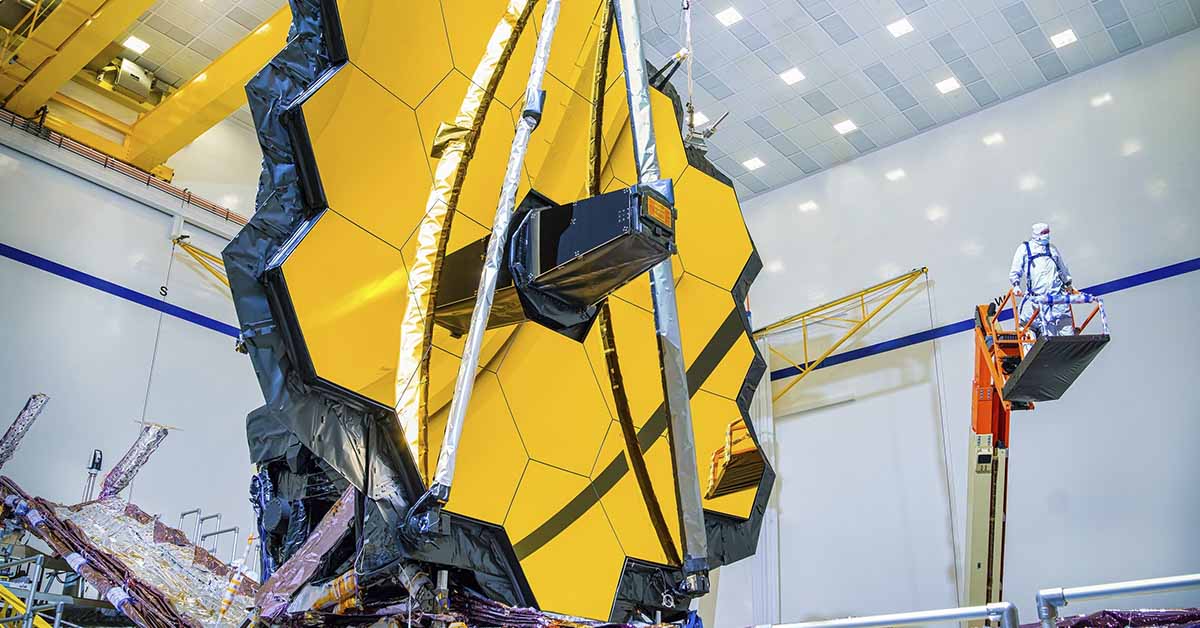Rumors have been swirling recently regarding the scientific community and an alleged groundbreaking discovery made by the James Webb Space Telescope. The speculation surrounds the possibility that the telescope may have found signs of life on a distant exoplanet. This claim has been gaining traction, but experts are urging caution, saying that a closer examination of the facts surrounding these rumors is required.1
The controversy escalated when The Spectator published an eye-catching article, “Have We Just Discovered Aliens?” In this piece, notable figures in astronomy, including British astronaut Tim Peake, suggested that the James Webb Telescope may have already found evidence of extraterrestrial life. Peake is quoted as saying, “Potentially, the James Webb telescope may have already found [alien life]. It’s just that they don’t want to release or confirm those results until they can be entirely sure, but we found a planet that seems to be giving off strong signals of biological life”.
Seeking James Webb Clarity from NASA
To verify such claims, NASA was asked for an official statement. Knicole Colón, the deputy project scientist for exoplanet science, clarified that there is currently no definitive evidence supporting the existence of life on any exoplanet seen. Colón acknowledged the excitement surrounding the potential discovery but emphasized the need for careful consideration and further investigation.
Colón stated, “JWST has not found definitive evidence of life on an exoplanet. It is anticipated that JWST observations may lead to the initial identification of potential biosignatures that could make habitability more or less likely for a given exoplanet. Future missions will be needed to conclusively establish the habitability of an exoplanet”.
The root of the excitement lies in the James Webb Telescope’s detection of a potential biosignature on the exoplanet (K2-18b). This planet, roughly 120 light years away from Earth, has shown signs of dimethyl sulfide, a molecule associated with living organisms on Earth.
The presence of this molecule on K2-18b has sparked hope that the planet, often referred to as a “Hyacean” world (meaning worlds of large oceans and hydrogen-rich atmospheres, like Earth), might harbor life. However, scientists have emphasized the need for caution, as there is no definitive evidence, and there is a lot more observation required to draw any kind of conclusions.
Read More: 50 Years Ago NASA Sent a Map Into Space to Help Aliens Find Earth—Now They’ve Got An Awesome Update
A Debate Of What the James Webb Telescope Sees
The scientific community remains divided on the implications of the new observations. Astrophysicist Rebecca Smethurst from the University of Oxford expressed optimism, stating, “I think we are going to get a paper that has strong evidence for a biosignature on an exoplanet very, very soon.” But other scientists caution against premature conclusions, returning to the complexity of the current data and the need for additional information before making any definitive claims.
Dimethyl sulfide is known for its distinctive smell, often described as similar to cooked cabbage. On Earth, this compound is only produced by living organisms, particularly phytoplankton in the oceans. While its presence on K2-18b is an easy leap to living organisms, scientists are hesitant, as the possibility of non-biological processes generating dimethyl sulfide may also exist. This uncertainty demonstrates just how important it is to meticulously research before one can confirm any findings.2
In response to the media statements, experts have clarified their positions. Astrophysicist Becky Smethurst expressed on Twitter that her prediction about a potential biosignature the James Webb Telescope picked up was a hopeful guess, not a definitive claim. She emphasized that it is a vast leap from a “potential biosignature” to asserting the existence of aliens, urging a more nuanced understanding of the ongoing research.3
The Road Ahead
As the JWST continues its observations and scientists eagerly await more data, the debate surrounding the potential discovery of life on K2-18b unfolds. The scientific process, characterized by cautious optimism and rigorous investigation, remains at the forefront. Until further observations and analyses are conducted, the question of whether the James Webb Telescope has truly discovered life on another planet remains open, inviting both excitement and skepticism.
In the words of astrophysicist Jonathan O’Callaghan, “The James Webb Telescope isn’t looking at any rocky planet in detail enough to be able to find biosignatures.” He reminds us that scientific discoveries are often incremental, and the full story of the observations on K2-18b are yet to be revealed. As the scientific community grapples with the new data from distant worlds, the journey toward understanding our place in the cosmos continues.
Read More: Scientists To Broadcast Earth’s Location To Aliens, Ignoring Stephen Hawking’s Warning
Sources
- “RUMORS CIRCULATING THAT JAMES WEBB HAS DISCOVERED LIFE ON ANOTHER WORLD.” Futurism. Frank Landymore. January 16.
- “No, the James Webb Space Telescope hasn’t found life out there—at least not yet.” Ars Technica. Eric Berger. January 16, 2024.
- “Experts Push Back Against Rumors of James Webb Life Detection.” Futurism. Victor Tangermann. January 17.

